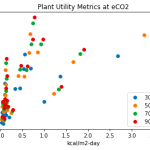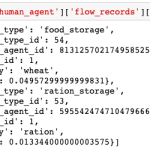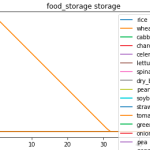Major SIMOC update now live!
With more than six months development effort by the core SIMOC development team Ezio, Grant, and Kai, working in parallel to the Arizona State University Computer Science Capstone team (Meridith, Greg, Ryan, David, and Ian) who are nearly complete with their effort to introduce live sensors feeds into a new SIMOC back-end (server) and modified front-end (web) interface for use at SAM and in classrooms worldwide!
The Phase V development of SIMOC (July 2021 – May 2022) introduces staggered crop rotation of food cultivars, a foundation for tracking food nutrition, advanced life cycle plant growth functions, the addition of random variation and total system entropy, and improved server-side management of agent definitions and data to provide a more dynamic, rich experience with even greater potential for non-linear outcomes and simulation of the real world.
With construction of the SAM Mars habitat analog at the iconic Biosphere 2, SIMOC now includes SAM Presets, a configuration of the SIMOC simulation that closely approximates the real-world SAM habitat. And with the newly introduced 3D objects during Configuration and on the Dashboard, the user can now visualize the habitat before and during the simulation, including SAM.
- Learn about all the improvements and updates at Phase V.
- First Time Users: Enjoy a quick introduction before you dive.
- Advanced Users: Learn how the SIMOC ABM functions, and how to analyze your data.
- If you are a returning user eager to try the new version, launch SIMOC now!













